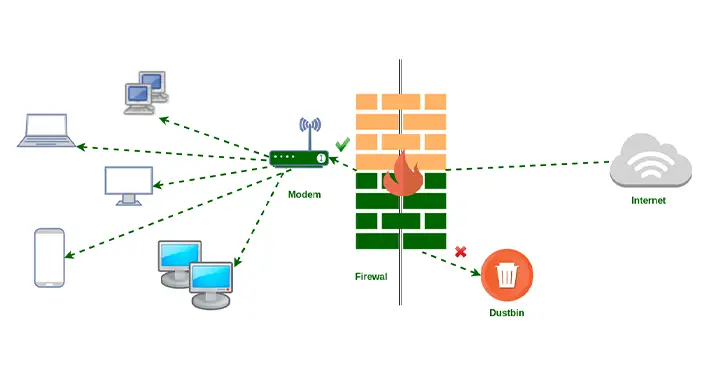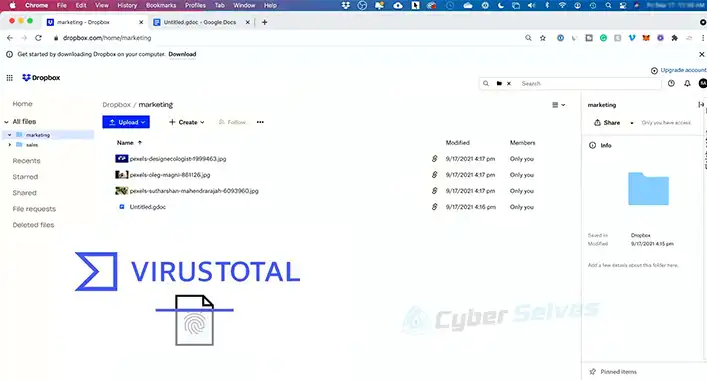What is Packet Filtering Firewall? Characteristics and Implementation
The firewall is a part of a system, and it protects the system from unwanted traffic. There are different types of firewalls based on their characteristics, configurations, and other things. Packet filtering firewalls are one of the most common types of firewalls that use packet filtering techniques to control and monitor network traffic. Moreover, it also protects a device from different types of security threats. Let’s discuss the pros and cons of packet filtering firewalls.

What is Packet Filtering?
Packet filtering means controlling and monitoring the transmission of packets over a network. This technique applies to network communication to check the source and destination IP addresses of data packets. Through the packet filtering process, a system verifies the secured and unsecured types of data packets based on the source and destination. The packet filtering technique works effectively on the LAN (Local Area Network) and device.
What is Packet Filtering Firewall?
The packet filtering firewall is a network security feature that uses a packet filtering process to protect a network from unauthorized access by following the predefined rules. It examines all types of incoming or outgoing data packets running over the network system. Also, it inspects the source and the destination of the IP address of the data packets to check whether they are secured or not. When the data packets pass the inspection process, this firewall lets the packets enter the network or device. The packets that fail to pass are blocked by this firewall. To do so, it follows some pre-configured rules.
How does Packet Filtering Firewall Works?
The packet filtering firewall works like a watchman on a network system. It allows or blocks the incoming and outgoing data packets of a network by following some predefined rules. It controls the data packet transferring process by inspecting the standards given below;
1. Source of the data package
2. Destination of the data package
3. Protocols or rules of data package transferring
To separate the data packets depending on these standards, it checks the ACLs (Access Control Lists). Through this, it controls and monitors the transmission route of the data packets. After separating the data packets, the packet filtering firewall checks the contained IP, TCP, and UDP header before dropping or accepting the data packets by following access control lists. Packet filtering firewall compares the fragment type of data packets with the access control lists before allowing the fragment type of data packets on the system. Also, the packet filtering firewall follows the default method that is set by the users. This method accepts the data packets even when they don’t pass the packet filtering inspection process.
What are the Types of Packet Filtering Firewalls?
There are several types of packet filtering firewalls depending on the work technique, configured rules, or other things. Depending on the pre-configured rules, there are three types of packet filtering firewalls. These types describe below:
1. Static Packet Filtering Firewall
The rules of this type of packet filtering firewall configure manually. The internal and external network connection is open or closed until the rules are changed manually. User or administrator defines those manual rules. A static packet filtering firewall allows users or administrators to manage ports, access control lists, and IP addresses. This type of firewall is simple and practical, and that’s why they are the best choice for smaller applications or users with few criteria.
2. Dynamic Packet Filtering Firewall
This type of packet filtering firewall has intelligent pre-configured rules for controlling, monitoring, and filtering the data packets otherwise, these rules may change dynamically. Through dynamic packet filtering, the user or administrator can set ports to remain open for specific periods and close automatically outside the time frame. It offers more flexibility to the user by providing adjustable parameters and certain automated processes.
3. Stateful Packet Filtering Firewall
It uses preset rules to maintain a secure connection. Stateful packet firewall monitors and controls the traffic of data packets in a sequence that is approved by the preset filter rules. These firewalls are able to protect the device or network from various types of threats, unwanted and harmful traffic. Though it uses preset configurations, the user or administrator can manually configure it to allow different ports and applications through the firewall.
What are the Advantages and Disadvantages of Packet Filtering Firewall?
Every type of firewall has some advantages and disadvantages; packet filtering firewalls are not an exception to that. Here are some advantages and disadvantages of packet filtering firewalls;
Advantages
- Controlling Through a Single Device
The key advantage of the packet filtering firewall is that it allows the user or administrator to control and protect against threats by using only one routing device. Also, it allows the user to control the entire system through one screening router.
- Efficient, Secured, and Fast Performance
It is the most secure available firewall option. The packet filtering firewall is faster than other firewall types. It effectively accepts and rejects the data packets based on its configured rules of it.
- User Transparency
The packet filtering firewall works freely without any cooperation from the user or administrator. It doesn’t let the user know about the data packet transmission unless it denies something. While other firewall types require a combination of other custom software and hardware.
- Affordability
In most devices, the packet filtering capacities are widely used as the built-in security system. Moreover, most modern-day websites are using it on their routing system.
- Inexpensiveness
Despite being the most secure firewall type, it is not expensive compared to other types of firewalls. Also, it is available in most devices and routing systems.
Disadvantages
- Filtration
The filtration process of the packet filtering firewall is the biggest disadvantage of it. It only works on the authentication of IP addresses and port numbers. The filtration process avoids information like context or application.
- Stateless Packet Filtering
This type of firewall automatically erases past invasions or filtration, which is a big disadvantage of it. The packet filtering firewall’s testing process is stateless, for which it becomes vulnerable to hackers or intruders bypassing it.
- Not Secure Against Spoofing Attacks
It cannot protect a device or network from IP spoofing attacks, which is a disadvantage of this type of firewall. Cybercriminals, hackers, or intruders can easily insert fake IP addresses through the packets to intrude or inject malicious code onto the device or system.
- Not Suitable for Every Network
Implementation of this type of firewall could be highly time-consuming or difficult for the user or administrator. It could get worse while managing or configuring access control lists of this type of firewall.
Which is the Example of the Packet Filtering Firewall?
As said before, the packet filtering firewalls act as a watchman on the entry-point of a device or network system which monitors controls and inspects all types of incoming and outgoing data packets to allow or disallow data traffic. It works on the IP and port addresses that are present on every TCP/IP packet. The firewall rule can be configured by the user or administrator. For these characteristics, the user can establish an IP address only to allow or deny specific types of data packets or information. Moreover, the users can set filtering rules to permit packets designed for mail or web servers and block all other data packets.
Frequently Asked Questions (FAQs)
Why is the Packet Filtering Firewall a Stateless Firewall?
The types of stateless firewalls are designed to protect a network system or device by applying static information like source and destination and do the same thing by applying some predefined rules. So, the packet filtering firewall is a stateless firewall.
Are the Packet Filtering Firewall and Circuit Level Gateway Firewall Same?
The packet filtering firewall works on the network layer of the OSI model, while the circuit level gateway firewall works on the application layer of the OSI model. Both types of firewalls are used in combination with systems.
Is Packet Filtering Firewall Are User Friendly?
Yes, the packet filtering firewall is user-friendly. This type of firewall only lets the user know about the rejected data packets and their use. Though it is difficult to configure the packet filtering firewalls, it is simple to use.
Final Words
Despite some limitations, the packet filter firewall is commonly used on devices and websites. Moreover, it is not that expensive an option. This can control and monitor the traffic of data packets by following the predefined rules and can protect the device and network systems from different types of threats. Hope you have known enough about the packet filtering firewalls. That’s all for today, have a great day.






